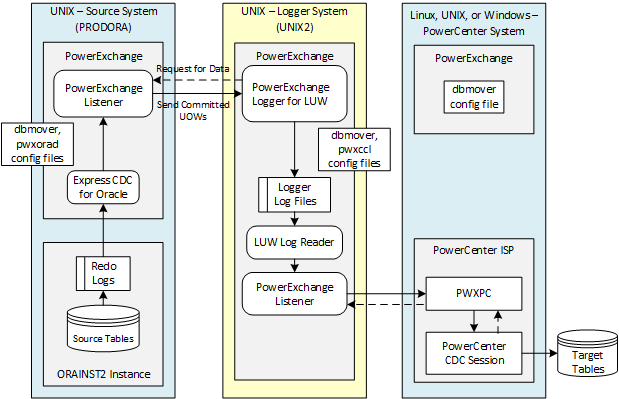PowerExchange for CDC and Mainframe
- PowerExchange for CDC and Mainframe 10.5
- All Products


DICTIONARY MODE=STATIC SOURCE=ONLINE; READER MODE=ACTIVE;
LISTENER=(unix1,TCPIP,2480) ORACLE_CAPTURE_TYPE=D CAPI_CONNECTION=(NAME=CAPIORA,TYPE=(ORAD,ORACOLL=COLINST2,PARMFILE=/Informatica/PowerExchangeVR/capture/pwxorad.cfg)) ORACLEID=(COLINST2,ORAINST2)
LISTENER=(unix2,TCPIP,2480) NODE=(unix1,TCPIP,PRODORA,2480) ... LOGPATH=/pwx/logs/oracond CAPT_XTRA=/pwx/capture/oracond/camaps CAPT_PATH=/pwx/capture/oracond /* ORACLE_CAPTURE_TYPE=D /* Source-specific CAPI Connection CAPI_CONNECTION=(NAME=CAPIORA,TYPE=(ORAD,ORACOLL=COLINST2,PARMFILE=/Informatica/PowerExchangeVR/capture/pwxorad.cfg)) /* /* CAPX CAPI Connection for continuous extraction CAPI_CONNECTION=(NAME=CAPXORA,TYPE=(CAPX,DFLTINST=COLINST2,FILEWAIT=60,RSTRADV=600))
DBID=COLINST2 DB_TYPE=ORA CONN_OVR=CAPIORA CAPTURE_NODE=unix1 CAPTURE_NODE_UID=orauser CAPTURE_NODE_EPWD=encrypted_password
NODE=(unix1,TCPIP,PRODORA,2480) NODE=(unix2,TCPIP,unix2,2480)